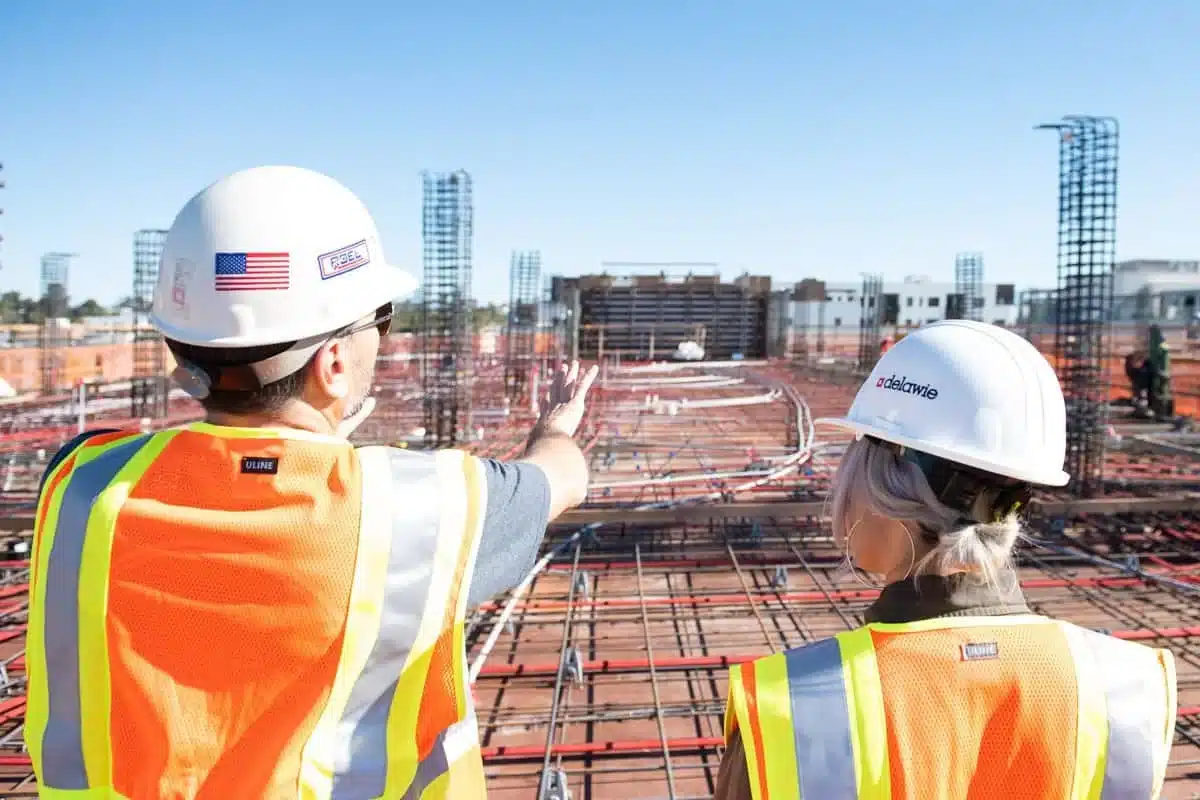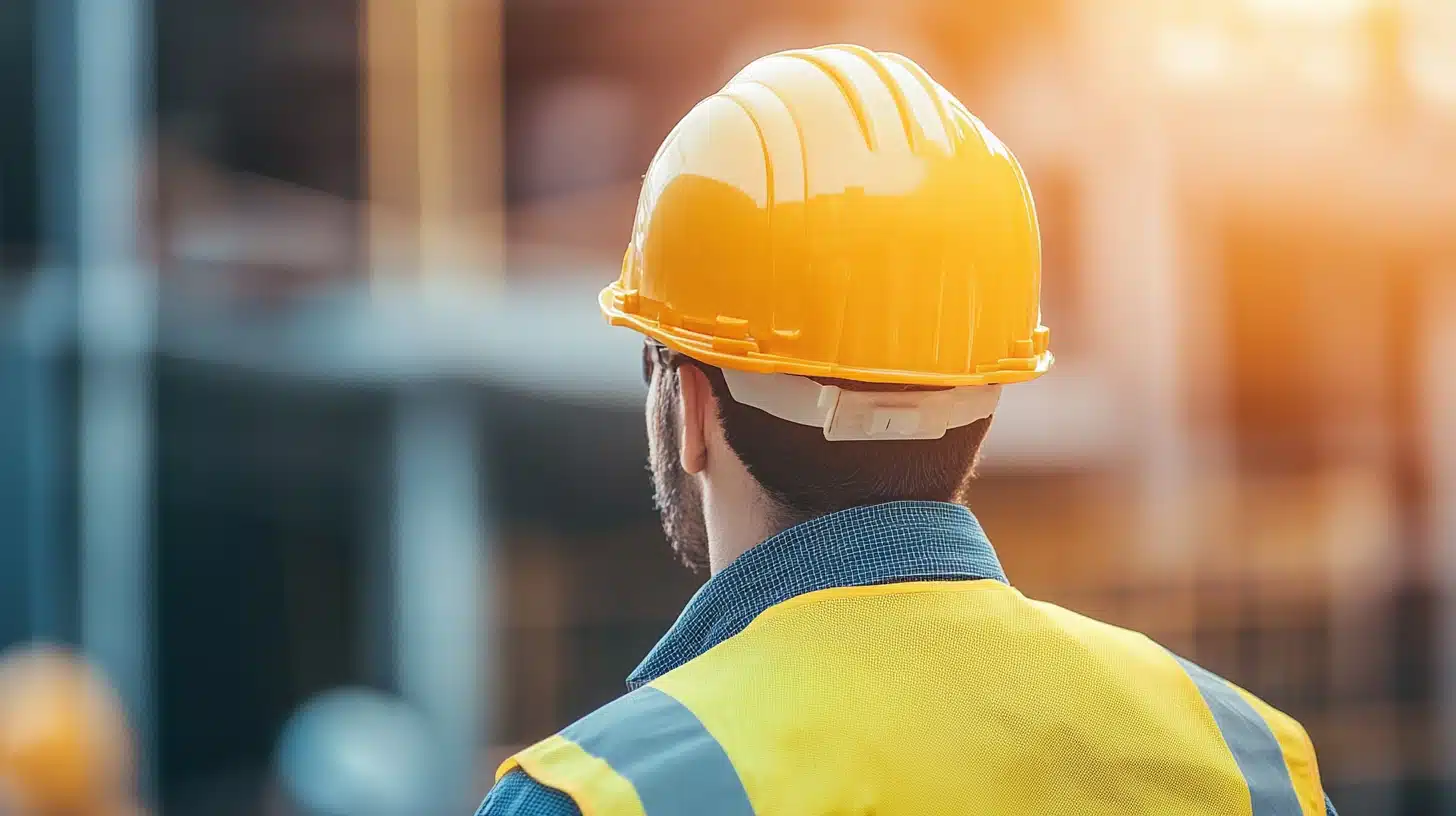As a construction project manager or supervisor, you know the safety of your team is more than just the required compliance items checked off at the start of each day.
Safety is the very heartbeat of your project. You cannot hope to lead your team to well-being unless you lead them to safety.
But a strong culture of safety doesn’t just happen. It’s built one brick at a time, just like any other structure on your site.
In this article, we’ll explore five strategies for cultivating a culture of safety on your site. I’ll walk you through real-life examples so you can see how these strategies work in action.
1. Lead by Example: Safety Starts at the Top

The leadership on your site determines what happens there, including the site’s organizational culture. If you want to create a culture of safety, it has to come from the top.
You’re a manager or supervisor; this is your first big chance to influence your workers’ attitudes toward safety. Tell them what to do, and they will do it. But what really counts is showing them that safety is the only option; there’s no negotiating it.
When you wear your PPE, don’t just put it on when it’s convenient (or when someone can see you). Put it on because you believe it works, and you wouldn’t be half as safe without it.
Think about this situation: You are accompanying a visitor around the premises, and you both reach an area where workers are operating large and dangerous machines.
Instead of hurrying past, you stop and take the time to equip yourself and your guest with hard hats and safety glasses. Your visitors don’t know it, but at this moment your are “leading” them.
You are demonstrating that safety is the top priority and a shared responsibility. You embody a “safety culture.” OSHA, the Federal Occupational Safety and Health Administration, says this about safety cultures: “A culture is what a company is and what happens when no one is looking.”
2. Communication is Key: Keep the Dialogue Open
The safety culture in an organization is held together by communication. If communication fails, even the best safety plans may fail, too.
As a manager or supervisor, you are responsible for ensuring that safety communication flows throughout your organization without stopping anywhere. Just posting rules on a bulletin board is not sufficient.
Consider the following scenario: You are holding a meeting with your crew to discuss safety. During this meeting, you ask for their input on the current safety measures. One of your workers brings up an issue concerning the scaffolding.
He or she is not happy about the condition of the scaffolding and mentions that in some spots it is unstable. You give this concern your undivided attention and, in response, carry out some immediate actions.
By addressing the issue promptly, you’ve not only prevented a potential accident, but you’ve also shown your team that their voices matter. The result? Workers who feel empowered to report hazards and a safer site for everyone.
Real-life stats back this up. According to the National Safety Council, companies that actively involve employees in safety decisions experience a 70% reduction in injury rates. So, keep the lines of communication open—you’ll be glad you did.
3. Regular Training: Equip Your Team with Knowledge

Training is the backbone of a strong safety culture. Even the most experienced workers need regular reminders and updates on safety protocols. Construction sites are dynamic, with constantly changing environments, equipment, and risks.
If you don’t keep training your workers, they might start being complacent, and then watch out! Safety in your workplace might as well slip through the cracks.
It’s the manager’s or supervisor’s job to make sure the team is well-trained and up-to-date with not just the latest and greatest rules, but also with the foundational stuff that makes up the team’s safety culture.
They really should cover everything from using the right tools safely to the safety of their work in the face of potential emergencies.
For instance, a new piece of equipment has just been brought onto the job site. Rather than assuming that workers will learn to use it through trial and error, the site supervisor holds a training session.
Each worker gets to learn about the equipment under the watchful eye of a trainer. They learn what to do if something goes wrong, what not to do (a.k.a. safety lessons), and they get to practice using the equipment.
4. Implement a Safety Reward System: Encourage Safe Behavior
Positive reinforcement is a very powerful and effective tool for shaping behavior. A safety reward system gets your team to follow the rules, and oh boy, does it make us follow them!
Safety isn’t our first nature, and that’s what makes it a good idea to use carrots more than sticks. To reward means to give a person something for doing a good deed, and hazard recognition is a good deed.
When a hazard is recognized, it is reported or fixed (I hope), and that makes a worker deserving of something, say a Safety Star!
Let’s say you implement a “Safety Star” program. Each week, you recognize a worker who has demonstrated exceptional commitment to safety.
Maybe they reported a potential hazard before it became a problem or consistently wore all their PPE without needing reminders. You could reward them with a gift card, a day off, or even just a shout-out during the next team meeting.
The key is to make safety something worth striving for, not just something workers have to do. This approach has real benefits.
And remember, if you’re a construction worker in the state of Texas and have an accident at your construction site, an Austin construction accident lawyer can be an essential ally.
5. Regular Safety Audits: Stay Proactive, Not Reactive
Your construction site is like a person in poor health. When the potential health problems are caught, they’re not allowed to develop into real health problems.
Safety audits are the health check-ups of construction sites. They allow the management problem to not develop into something serious.
They allow the management problem to not develop into something serious. We catch things before we have to fix them—in a sense, we fix them before they’re broken.
Let’s say you do a monthly safety audit and realize that the site’s walkways are a trip hazard waiting to happen. You could wait for an accident to happen or for someone to complain and then remedy the situation.
Instead, you order a clean-up and implement some new housekeeping rules. Yes, it’s a small step, but it’s also a no-brainer and a huge difference-maker when it comes to preventing possible personal injuries.
Final Thoughts
It takes a lot more than just rule-following to generate a robust safety culture on a construction site. For a manager or supervisor, the construction site safety culture hinges on you, for better or worse. You set the tone. You create the “vibes.”
So, lead by example: Do the right thing and demonstrate that to your men. Communicate openly, and encourage your crew to bring you their safety concerns.
Train them regularly, and also arm yourself with the essential knowledge the site requires to function safely. When you think about it, you are the site’s safety officer, really, whether or not that is your designated title.
And if you’re a worker and an accident occurs, don’t hesitate to contact an Austin personal injury lawyer to protect your workers’ rights. In the end, a strong safety culture isn’t just good for the workers—it’s good for business too.

